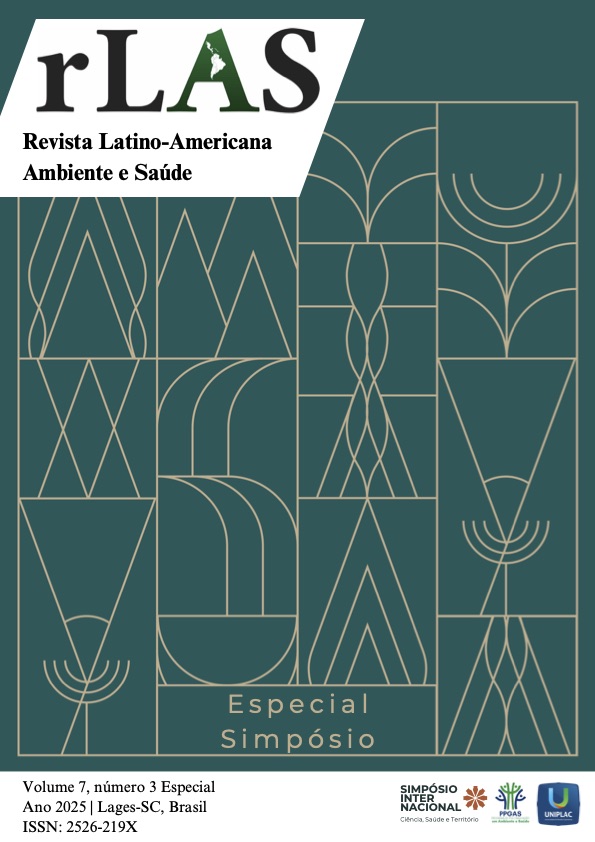Potential use of plant growth-promoting microorganisms in Tifton 85 as a sustainable alternative to nitrogen fertilization
Keywords:
inoculation, plant growth-promoting microrganisms, Cynodon spp. cv. Tifton 85Abstract
The use of plant growth-promoting microorganisms (PGPMs) emerges as a promising alternative to conventional nitrogen fertilization, aiming to enhance agricultural sustainability and soil health. This study aimed to evaluate the effect of PGPM inoculation on the productivity and quality of Cynodon spp. cv. Tifton 85 pasture, in combination with a 50% reduction in nitrogen fertilization. The experiment was conducted in the Curitibanos-SC region, using a randomized block design with five treatments and five replications. The following PGPMs were tested: Azospirillum brasilense, Bacillus subtilis, Pseudomonas fluorescens, and Rhizobium tropici, all applied alongside a reduced nitrogen dose. Data on biomass accumulation, nitrogen content, and crude protein were analyzed. Inoculation with Bacillus subtilis led to increased nitrogen and crude protein content, while Rhizobium tropici inoculation resulted in the highest biomass accumulation among treatments. Although the observed effects were statistically similar to the control, the results indicate the agronomic potential of these strains, highlighting the need for further studies to validate their effectiveness under different soil, climate, and management conditions.
References
ALVARES, C. A. et al. Köppen’s climate classification map for Brazil. Meteorologische Zeitschrift, v. 22, n. 6, p.711-728, 2013.
EMBRAPA. Pastagens do Brasil: geração de alimentos, couro, cosméticos e medicamentos. São Carlos - Sp: Embrapa, 2019. 2 p. Disponível em: https://www.embrapa.br/portfolio/pastagens#:~:text=Os%20pastos%20que%20alimentam%20o%20mundo&text=S%C3%A3o%20cerca%20de%20160%20milh%C3%B5es,%2C%20cab ras%2C%20cavalos%20e%20b%C3%BAfalos. Acesso em: 12 abr. 2025.
EMBRAPA. Sistema brasileiro de classificação de solos. Centro Nacional de Pesquisa de Solos, Brasília, vol.2, p.306, 2006.
GUIMARÃES, G. S.; CANELOSSI, B. F.; NOGUEIRA, M. A.; HUNGRIA, M. Efeito da inoculação com bactérias promotoras do crescimento de plantas em pastagens de Megathyrsus maximus cv. BRS Zuri e Urochloa ruziziensis. In: 18ª Jornada Acadêmica da Embrapa Soja: resumos expandidos. Londrina: Embrapa Soja, 2023. 8 p. Disponível em: https://ainfo.cnptia.embrapa.br/digital/bitstream/doc/1155212/1/p-74-DOCUMENTOS-453-Jorn-Acad-2023-12.pdf. Acesso em: 13 abr. 2025.
GUIMARÃES, G. S. et al. Pointing out opportunities to increase grassland pastures productivity via microbial inoculants: Attending the society’s demands for meat production with sustainability. Agronomy, v. 12, n. 8, p. 1748, 2022. Disponível em: https://doi.org/10.3390/agronomy12081748. Acesso em: 13 abr. 2025.
HUNGRIA, M.; NOGUEIRA, M. A. Fixação biológica do nitrogênio. In: MEYER, M.C. et al. Bioinsumos na cultura da soja. Brasília: Embrapa, 2022. Cap. 8. p. 141-162. Disponível em: https://ainfo.cnptia.embrapa.br/digital/bitstream/doc/1147044/1/cap-8-Bioinsumos-na-cultura-da-soja.pdf . Acesso em: 22 ago. 2024.
RODRIGUES, B. H. N.; LOPES, E. A.; MAGALHÃES, J. A. Teor de Proteína Bruta do Cynodon spp. cv. Tifton 85 sob Irrigação e Adubação Nitrogenada, em Parnaíba, Piauí. Teresina Pi: Ministério da Agricultura, Pecuária e Abastecimento, 2005. 4 p. Disponível em: https://www.infoteca.cnptia.embrapa.br/bitstream/doc/68112/1/CT171.pdf . Acesso em: 10 abr. 2024.
SOTTA, E. D.; SAMPAIO, F. G.; COSTA, M. S. N. (org.). Coletânea de fatores de emissão e remoção de gases de efeito estufa da pecuária brasileira. Brasília, DF: MAPA: SENAR, 2020.. Disponível em: https://www.infoteca.cnptia.embrapa.br/infoteca/handle/doc/1131450. Acesso em: 13 abr. 2025.


